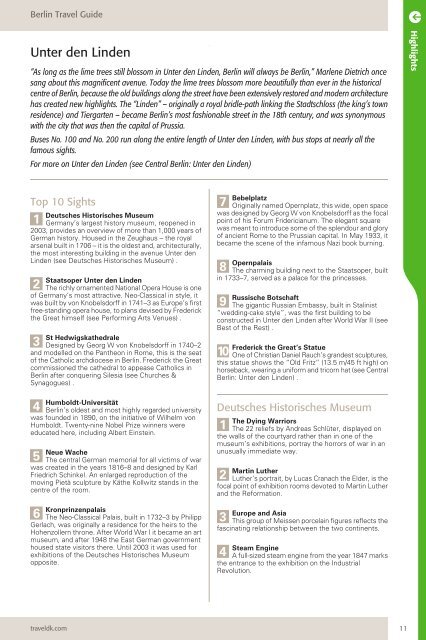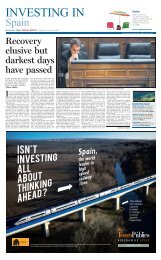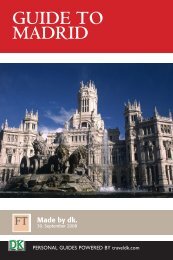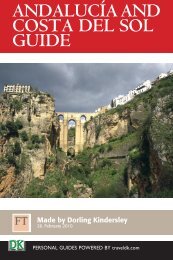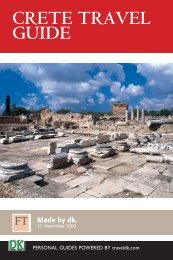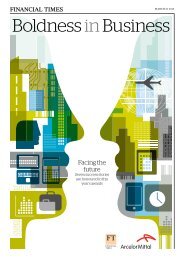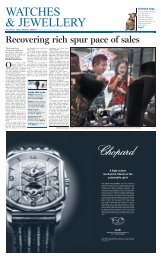You also want an ePaper? Increase the reach of your titles
YUMPU automatically turns print PDFs into web optimized ePapers that Google loves.
Berlin Travel Guide<br />
Unter den Linden<br />
“As long as the lime trees still blossom in Unter den Linden, Berlin will always be Berlin,” Marlene Dietrich once<br />
sang about this magnificent avenue. Today the lime trees blossom more beautifully than ever in the historical<br />
centre of Berlin, because the old buildings along the street have been extensively restored and modern architecture<br />
has created new highlights. The “Linden” – originally a royal bridle-path linking the Stadtschloss (the king’s town<br />
residence) and Tiergarten – became Berlin’s most fashionable street in the 18th century, and was synonymous<br />
with the city that was then the capital of Prussia.<br />
Buses No. 100 and No. 200 run along the entire length of Unter den Linden, with bus stops at nearly all the<br />
famous sights.<br />
For more on Unter den Linden (see Central Berlin: Unter den Linden)<br />
Top 10 Sights<br />
1<br />
Deutsches Historisches Museum<br />
Germany’s largest history museum, reopened in<br />
2003, provides an overview of more than 1,000 years of<br />
German history. Housed in the Zeughaus – the royal<br />
arsenal built in 1706 – it is the oldest and, architecturally,<br />
the most interesting building in the avenue Unter den<br />
Linden (see Deutsches Historisches Museum) .<br />
2<br />
Staatsoper Unter den Linden<br />
The richly ornamented National Opera House is one<br />
of Germany’s most attractive. Neo-Classical in style, it<br />
was built by von Knobelsdorff in 1741–3 as Europe’s first<br />
free-standing opera house, to plans devised by Frederick<br />
the Great himself (see Performing Arts Venues) .<br />
3<br />
St Hedwigskathedrale<br />
Designed by Georg W von Knobelsdorff in 1740–2<br />
and modelled on the Pantheon in Rome, this is the seat<br />
of the Catholic archdiocese in Berlin. Frederick the Great<br />
commissioned the cathedral to appease Catholics in<br />
Berlin after conquering Silesia (see Churches &<br />
Synagogues) .<br />
4 Humboldt-Universität<br />
Berlin’s oldest and most highly regarded university<br />
was founded in 1890, on the initiative of Wilhelm von<br />
Humboldt. Twenty-nine Nobel Prize winners were<br />
educated here, including Albert Einstein.<br />
5<br />
Neue Wache<br />
The central German memorial for all victims of war<br />
was created in the years 1816–8 and designed by Karl<br />
Friedrich Schinkel. An enlarged reproduction of the<br />
moving Pietà sculpture by Käthe Kollwitz stands in the<br />
centre of the room.<br />
6 Kronprinzenpalais<br />
The Neo-Classical Palais, built in 1732–3 by Philipp<br />
Gerlach, was originally a residence for the heirs to the<br />
Hohenzollern throne. After World War I it became an art<br />
museum, and after 1948 the East German government<br />
housed state visitors there. Until 2003 it was used for<br />
exhibitions of the Deutsches Historisches Museum<br />
opposite.<br />
traveldk.com<br />
7 Bebelplatz<br />
Originally named Opernplatz, this wide, open space<br />
was designed by Georg W von Knobelsdorff as the focal<br />
point of his Forum Fridericianum. The elegant square<br />
was meant to introduce some of the splendour and glory<br />
of ancient Rome to the Prussian capital. In May 1933, it<br />
became the scene of the infamous Nazi book burning.<br />
8 Opernpalais<br />
The charming building next to the Staatsoper, built<br />
in 1733–7, served as a palace for the princesses.<br />
9<br />
Russische Botschaft<br />
The gigantic Russian Embassy, built in Stalinist<br />
“wedding-cake style”, was the first building to be<br />
constructed in Unter den Linden after World War II (see<br />
Best of the Rest) .<br />
10<br />
Frederick the Great’s Statue<br />
One of Christian Daniel Rauch’s grandest sculptures,<br />
this statue shows the “Old Fritz” (13.5 m/45 ft high) on<br />
horseback, wearing a uniform and tricorn hat (see Central<br />
Berlin: Unter den Linden) .<br />
Deutsches Historisches Museum<br />
1<br />
The Dying Warriors<br />
The 22 reliefs by Andreas Schlüter, displayed on<br />
the walls of the courtyard rather than in one of the<br />
museum’s exhibitions, portray the horrors of war in an<br />
unusually immediate way.<br />
2<br />
Martin Luther<br />
Luther’s portrait, by Lucas Cranach the Elder, is the<br />
focal point of exhibition rooms devoted to Martin Luther<br />
and the Reformation.<br />
3<br />
Europe and Asia<br />
This group of Meissen porcelain figures reflects the<br />
fascinating relationship between the two continents.<br />
4<br />
Steam Engine<br />
A full-sized steam engine from the year 1847 marks<br />
the entrance to the exhibition on the Industrial<br />
Revolution.<br />
11<br />
Highlights


